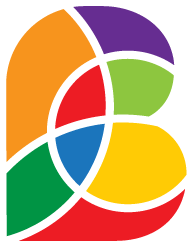
AI-generated material transformed by human imagination into musical score
for Solo Piano
피아노를 위한, “겨울 밤의 여행자에 대하여"
”A computer does not create a composition. It is the interaction between the composer and the computer.”
György Ligeti
World premiere by Arial MO, piano
April 29, 2024 at 8:00 PM (ET), Brown Hall, New England Conservatory, Boston
Full (quasi-studio) recording, 2023 ver. (ca. 33 min.)
Live recording from the premiere, 2023 ver. (ca. 30 min.)
April 29, 2024 at 8:00 PM (ET), Brown Hall, New England Conservatory, Boston
Excerpt, Epoch 062-2, tempo giusto
Excerpt, Misterioso
Excerpt, Epoch 059
April 29, 2024 at 8:00 PM (ET), Brown Hall, New England Conservatory, Boston
Full (quasi-studio) recording, 2023 ver. (ca. 33 min.)
Live recording from the premiere, 2023 ver. (ca. 30 min.)
April 29, 2024 at 8:00 PM (ET), Brown Hall, New England Conservatory, Boston
Excerpt, Epoch 062-2, tempo giusto
Excerpt, Misterioso
Excerpt, Epoch 059
Program notes
As evident from my website, I have recently replaced numerous pictures on the homepage with artificially synthesized images using a Deep Learning application. Nearly half of the images featured here have been generated by the “discord.” The rapid evolution of AI and Deep Learning algorithms is truly remarkable, and artists in the 21st century might find themselves in competition with AI-driven creations. Rather than compete with the technology, I find pleasure in embracing machines as collaborative creative partners.
In 2022, I embarked on a new phase of my research on Computer Music, in the field of Artificial Intelligence. To delve into this field, I studied MIT OCW’s Deep Learning course—a decision mirroring my choice back in 2010 when I studied differential equations, a significant contribution to my DMA research on virtual bells. For this, I began studying Python programming languages and exploring codes on the Google Colab platform. For over two months, I played with neural network codes, allowing the computer to learn circa 110 piano compositions written by Mozart. Following each learning process, which lasted between one and six hours (approximately 20 to 200 epochs—deep learning sequences), the computer generated fresh piano compositions within its comprehension of Mozart's musical context. Essentially, the computer composed pastiche pieces reminiscent of Mozart's style or aimed to counterfeit Mozart's works at its best.

Deep Learning generated Output 020, sequence size 25, temperature 2, 74 epochs of learning
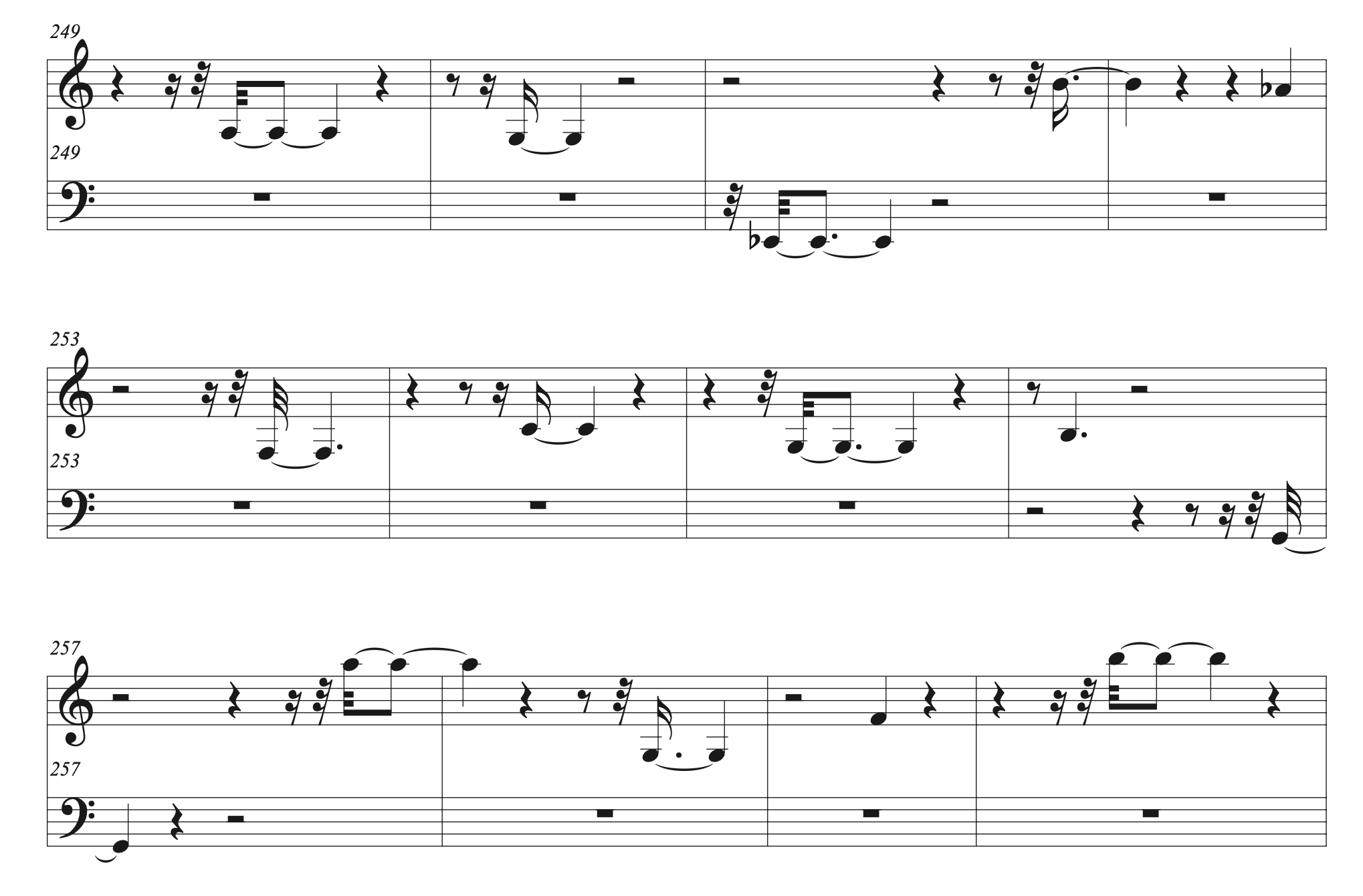
Deep Learning generated Output 062-2, 109 learned works, sequence size 256, weight: 0.085, learning rate: 0.001, optimization: RMSProp, 200 epochs of learning, temperature 3.7
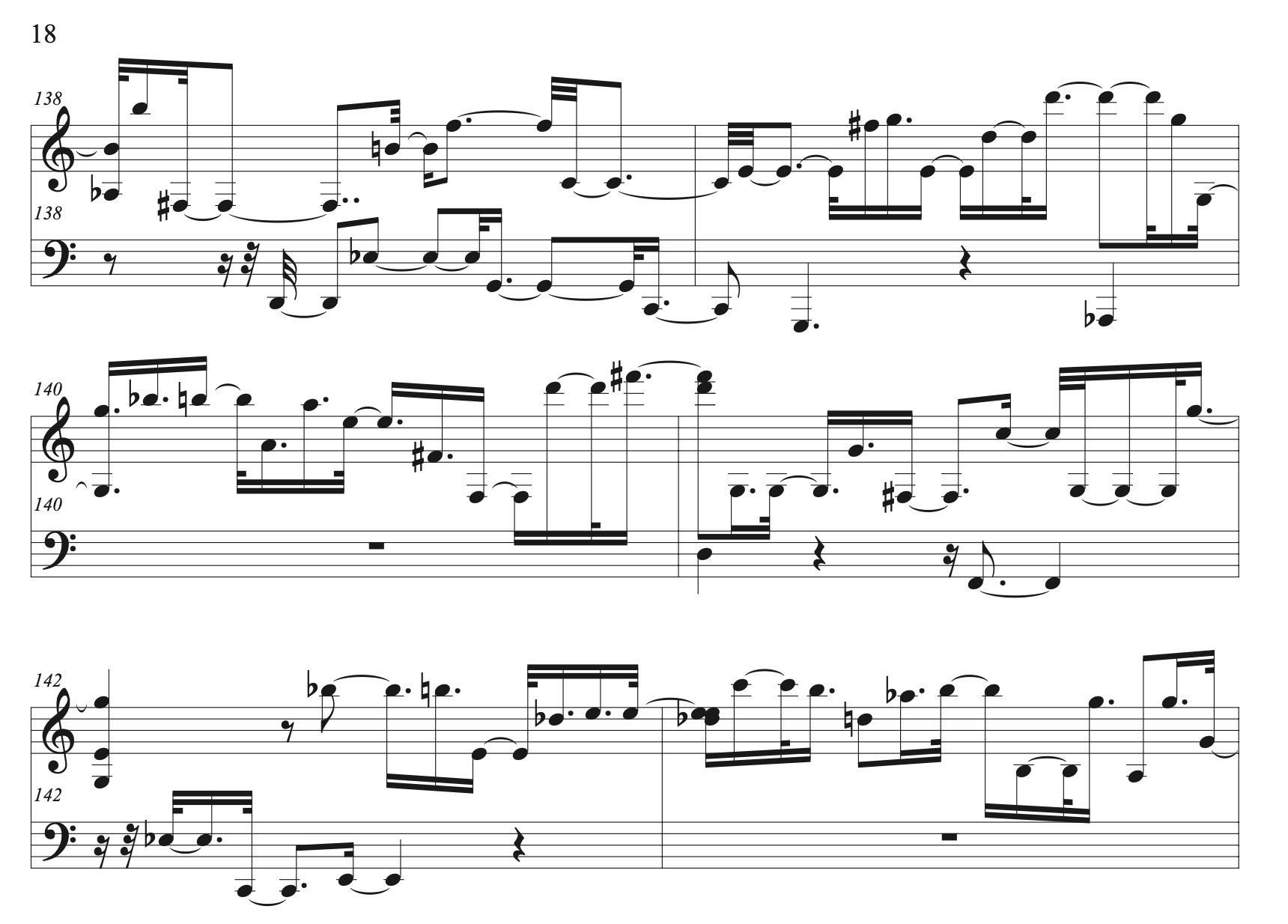
Deep Learning generated Output 063-6, 109 learned works, sequence size 256, weight: 0.085, learning rate: 0.001, optimization: RMSProp, 30 epochs of learning, temperature 3.9, seed piece: Fantasy in c minor KV366

Google Colab code for A Winter’s Night
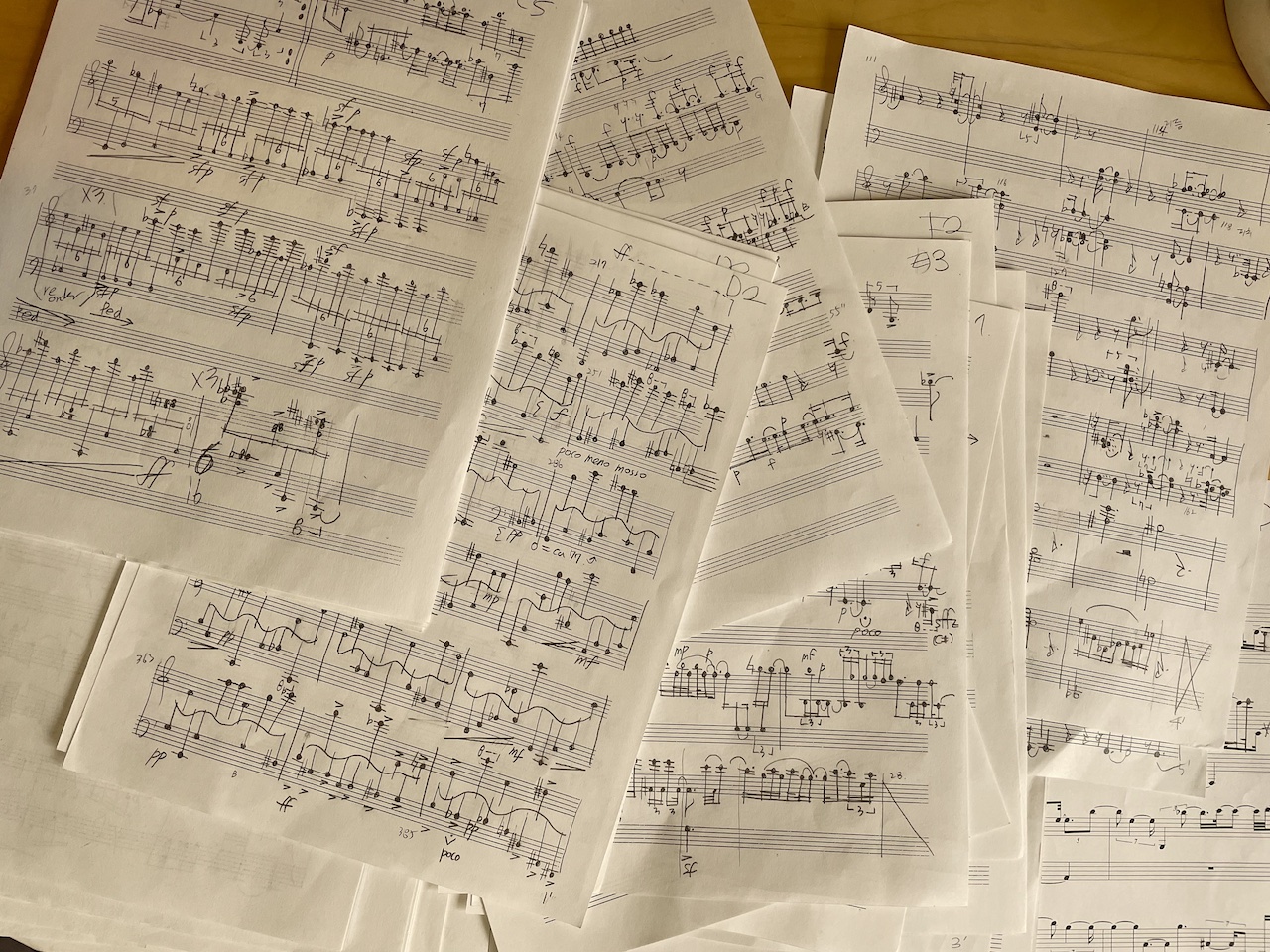
Original handwritten score of On a Winter’s Night a Traveller, The Deeply Learned Clavier
Due to the limitations of my access to the Google Colab platform and the constraints of session timeouts, I was constrained to a maximum of six hours for each deep-learning process, despite the fact that these processes typically demand significantly longer durations, often ranging from several days to weeks and months. Additionally, the available volume of model data-works proved insufficient for generating authentic Mozart-esque piano work, e.g., having Alberti basslines or crisp and concise phrase models which we can easily find in his oeuvre. Nonetheless, the outputs/works compiled by the computer implied various intriguing features that we can often find in the tonal music repertoire, including the presence of ambiguous tonalities that bridged different keys and modal mixture, diatonic scales and modes, repetitions, various patterns of chords and arpeggios, oftentimes realized in awkward, crude and rudimentary, or even anti-contrapuntal, artificial(of course) and mechanistic ways, in distorted and grotesque shapes.
For about a month I listened to these outputs, and began tracing the trajectories of the computer’s unfulfilled thoughts. I was almost an archeologist who discovered a pile of unfinished, improvisatory, spurious sketches written by an unknown composer. During the discovery process, I tried to reveal the computer’s intentions, develop his/her/their imagination, and transform and elevate it into my own artwork.
It is commissioned by and dedicated with admiration and gratitude to Ariel Mo, who beautifully world-premiered my Le Tombeau de Harvey in January 2022.
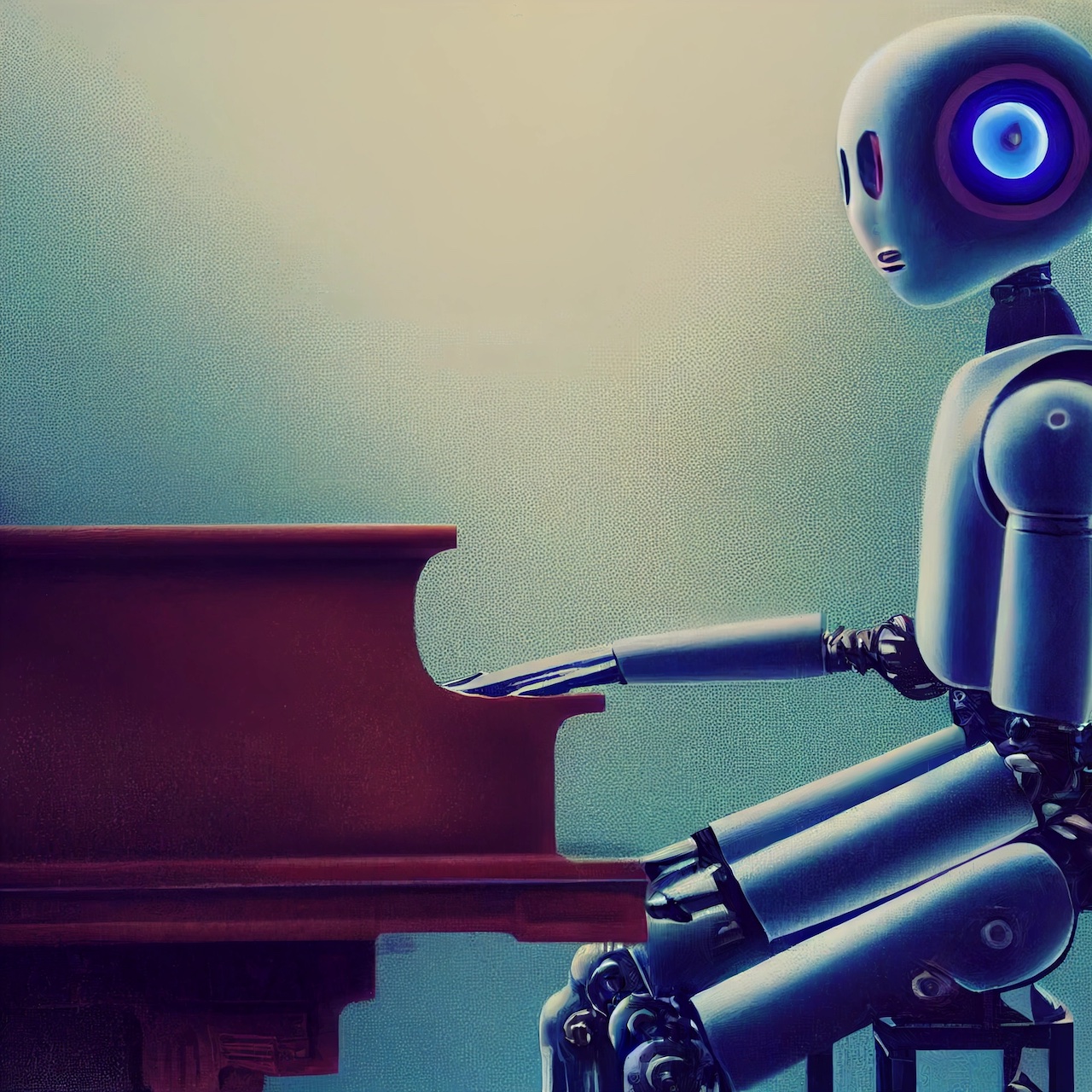
AI-created concept image for the piece
About the title:
While I cannot logically elucidate the precise connection between this process and Calvino's "If on a winter's night a traveler," I pondered Calvino's novel composed of two or three distinct dimensions: one housing the protagonist (designated as dimension α), and another enfolding the "inner book stories" (referred to as dimension β). These stories are composed of multiple episodes scripted by unproven or spurious authors (dimension γ). In the context of my creative process, I contemplated my existence as corresponding to the protagonist’s role. Each distinct machine-generated musical piece, on the other hand, could be perceived as an independent world or narrative. On the contrary, an alternative interpretation could posit that these machine-generated compositions establish a continuous real-time background world due to their evolutionary nature. In this view, my interpolations or (hu)man-made parts could be likened to brief episodes, composed quasi-independently in accordance with those machine-generated renderings. Additionally, the original novel introduces another layer—an existence of real/fake authors for these short episodes, such as "Cimmerian" or "Cimbrian," among others. In this context, Mozart might be positioned as one of these nearly forgotten (real/fake) authors. Analogous to the novel's authors, the genuineness, validity, and even the existence of these creators remain uncertain, existing in the thin spaces between binary data. They might be questionable, misattributed, or fakes—akin to the way this deep-learned Mozart cannot be verified as real or provide evidence for whether a genuine Mozart's ideas could be represented in such a manner.
Mozart – an “ideal” author (dimension δ)
Deeply Learned Computer – spurious authors (dimension γ)
Machine-generated pieces – nested episodes created by the spurious authors (dimension β)
Myself – The Protagonist and his world (dimension α)
or
Myself – a spurious author (dimension γ)
My creations – nested episodes (dimension β)
Machine-generated pieces – The Protagonist and the real world (dimension α)
optional [Original Mozart scores – The Platonic ideal (dimension α’-prime)]
...(Other interpretations possible)
